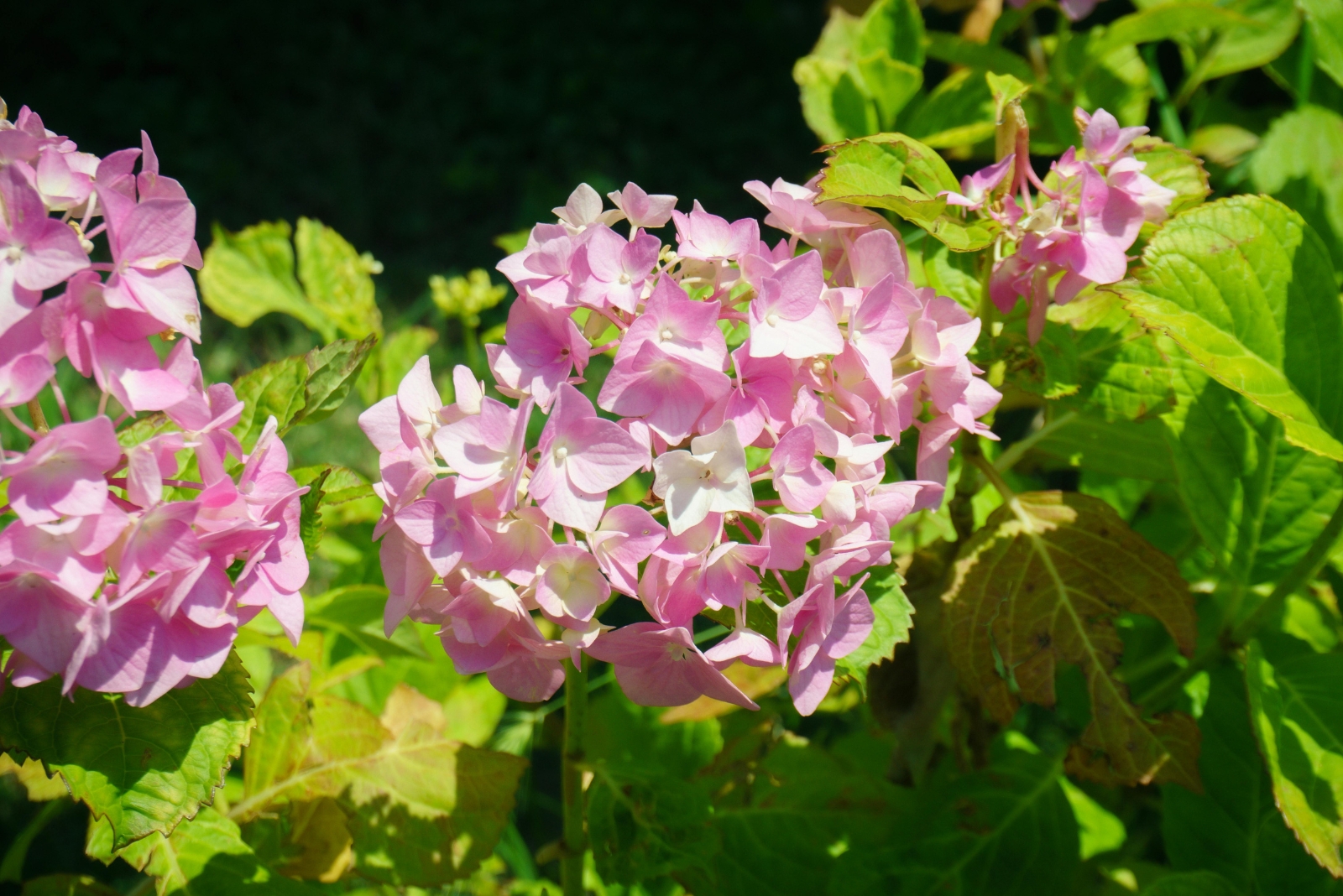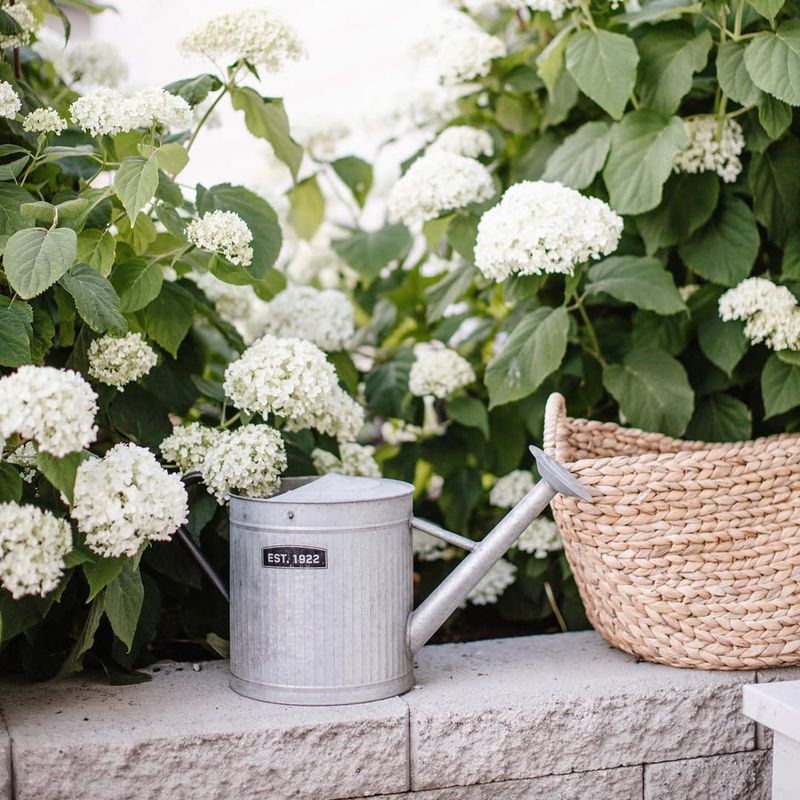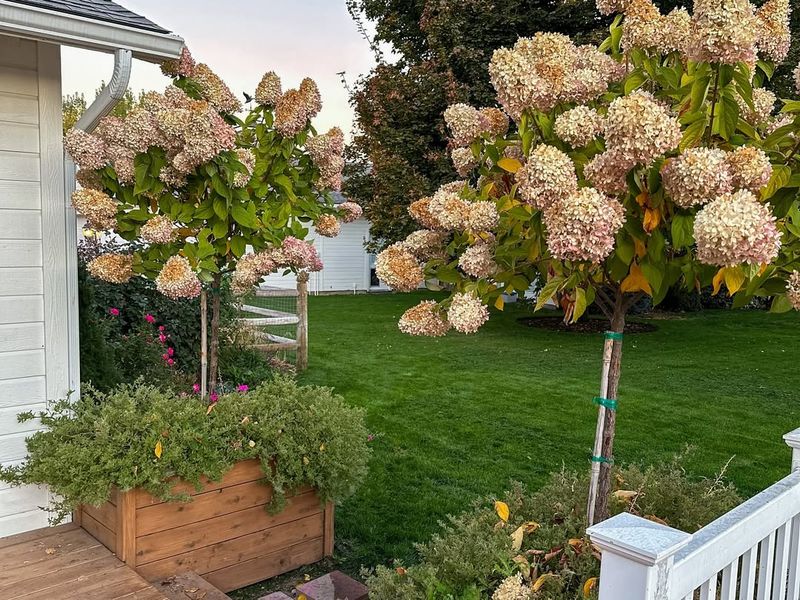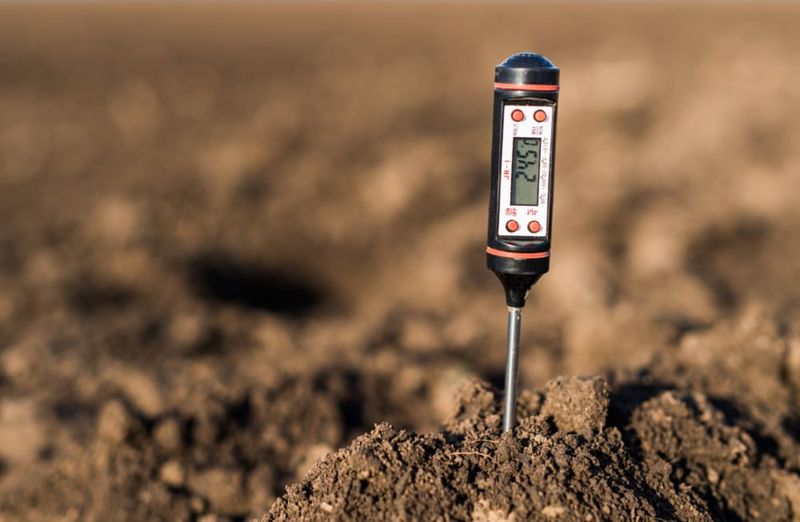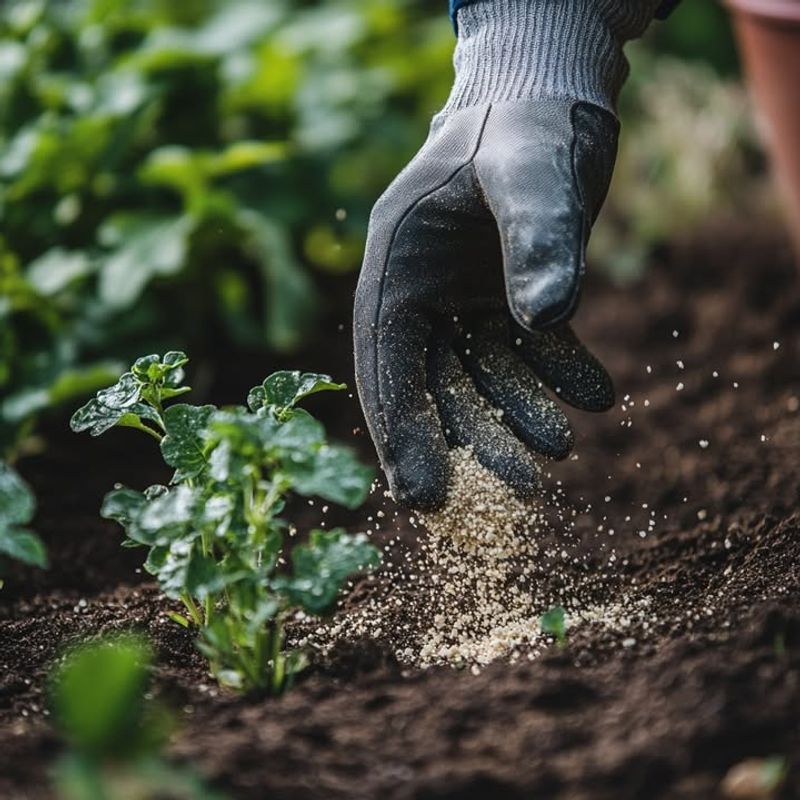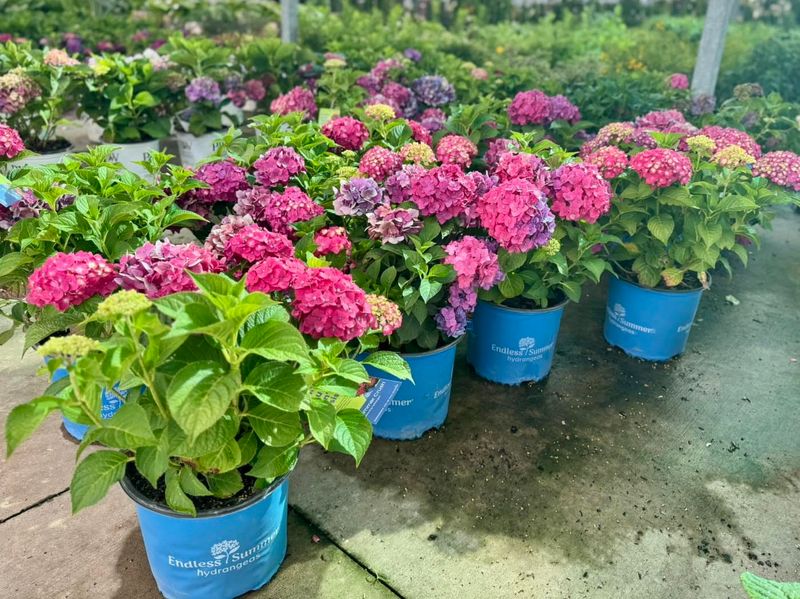October brings cooler temperatures to Arizona, making it the perfect time to give your hydrangeas the care they need before winter arrives. Your beautiful blooms depend on the right attention during this crucial month to thrive through the changing seasons.
Missing these important tasks could mean fewer flowers and weaker plants next spring, so now is the moment to take action and ensure your hydrangeas stay healthy and vibrant.
1. Adjust Your Watering Schedule For Fall
Arizona’s October weather can be tricky, with temperatures dropping but soil still drying out quickly. Your hydrangeas need less water than summer but more than you might think for fall.
Check the soil moisture about two inches down before watering. If it feels dry, give your plants a deep soak rather than frequent shallow watering. Morning watering works best because it allows leaves to dry before evening, preventing fungal problems that love Arizona’s humidity shifts.
2. Mulch Around The Base To Protect Roots
Adding a fresh layer of mulch around your hydrangeas acts like a cozy blanket for their roots. Organic materials such as wood chips, shredded bark, or compost work wonderfully in Arizona gardens.
Spread the mulch about three to four inches thick, keeping it a few inches away from the stems to prevent rot. Mulch helps regulate soil temperature, keeps moisture in the ground longer, and stops weeds from stealing nutrients your hydrangeas need for strong growth.
3. Prune Dead Or Damaged Branches Carefully
Dead wood and damaged branches drain energy from your hydrangeas without giving anything back. October is an ideal time to remove these problem areas before winter sets in.
Use clean, sharp pruning shears to cut away brown or brittle stems at their base. Avoid heavy pruning of healthy branches since hydrangeas set their flower buds in fall. Focus only on removing what looks unhealthy or broken, leaving the strong growth alone for spectacular blooms come spring.
4. Test And Amend Your Soil pH Levels
Did you know your soil’s pH level actually controls your hydrangea’s bloom color? Arizona soil tends to be alkaline, which pushes flowers toward pink shades.
Pick up an inexpensive soil test kit from any garden center and check your pH this month. For blue blooms, add sulfur or aluminum sulfate to lower pH. For pinker flowers, add lime to raise it. October gives amendments time to work into the soil before next year’s growing season starts.
5. Apply Slow-Release Fertilizer For Strong Roots
Feeding your hydrangeas in October might seem backward, but it actually helps them build strong root systems for winter. Choose a balanced slow-release fertilizer designed for acid-loving plants.
Sprinkle the fertilizer around the drip line, where rain naturally falls from the outer leaves. Water thoroughly after applying to help nutrients soak into the soil. Avoid high-nitrogen formulas that push leaf growth instead of root development during this critical preparation period for cooler months ahead in Arizona.
6. Provide Afternoon Shade Protection
Even in October, Arizona’s afternoon sun can scorch hydrangea leaves and stress plants unnecessarily. These beauties prefer morning light with protection during the hottest part of the day.
Install shade cloth, position portable screens, or plant near larger shrubs that cast afternoon shadows. Filtered sunlight keeps foliage healthy and prevents the crispy, brown leaf edges that signal sun damage. Proper shading now means lusher, greener plants that can focus energy on root growth rather than recovering from sunburn.
7. Inspect For Pests And Disease Issues
October’s mild weather can bring out aphids, spider mites, and other unwelcome visitors to your hydrangeas. Early detection saves you major headaches later on.
Look under leaves for tiny insects, webbing, or discolored spots that signal trouble. Check stems for soft, mushy areas that indicate fungal infections. Treat problems immediately with insecticidal soap for pests or remove infected plant parts for diseases. Catching issues now prevents them from overwintering and exploding into bigger problems when spring warmth returns.

